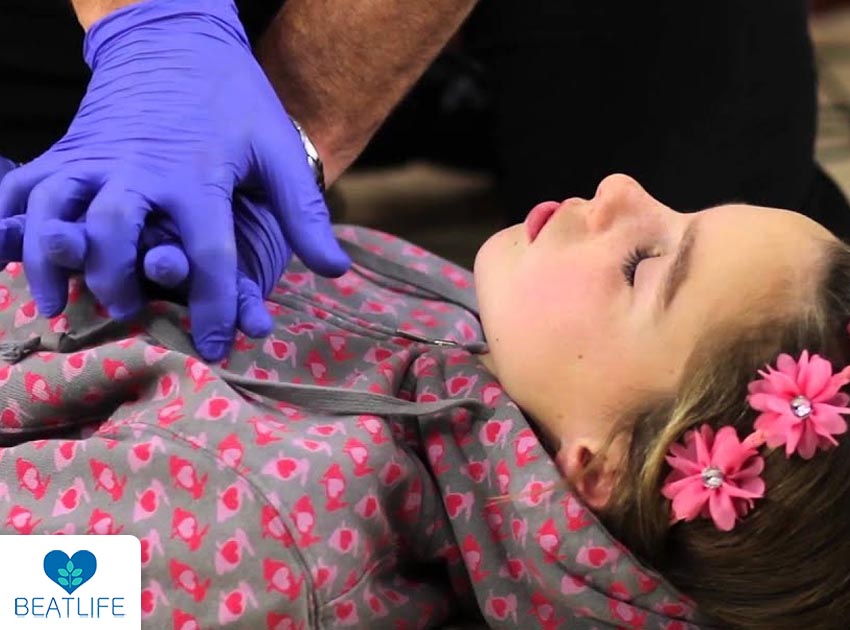In the field of children emergency medicine, Cardiopulmonary Resuscitation (CPR) application is a crucial intervention. Due to the structural and physiological variations between the circulatory systems of children and adults, the therapy of young cardiac arrest necessitates a different set of approaches and considerations from adult instances.
how many CPR compressions for a child is recommended? is a basic subject that this article explores in detail. In order to improve the level of care given to the most vulnerable patient population—children and infants—we are looking into the best pediatric CPR parameters. As we examine this crucial issue, we’ll clarify how many CPR compressions for a child is needed as well as the crucial steps for performing CPR on infants and children, explain the nuances of these life-saving techniques, and consider cutting-edge equipment like the CPRmeter to reduce the risk of ribs break.
The goal of this article is to provide healthcare workers and other caregivers with the fundamental information and abilities needed to preserve children’s lives in urgent situations. It highlights the crucial part that these people play in saving the lives of children and attempts to give detailed, fact-based advice on the best CPR compression rates. By disseminating this information, we hope to reduce the room for error in these critical situations involving children and transform pediatric emergencies into chances for rescue and recovery.

How many CPR compressions for a child?
The important question, “How many CPR compressions for a child?” is directly related to the more comprehensive issue of pediatric resuscitation. Contrary to adults, children have distinct anatomical and physiological characteristics that call for a specific method of cardiopulmonary resuscitation (CPR). When performing CPR on newborns (under 1-year olds), it is extremely important to understand the intricacies of pediatric CPR procedures, even though accuracy in compression count is of utmost importance. Calling the local emergency number before beginning CPR ensures that competent assistance is on the way. When addressing a baby, position them on their back, open their lips, and give them five careful rescue breaths, making sure their chest rises with each one. To maintain an airtight seal, the technique utilized to create a good seal over the nose and mouth should be modified as necessary.
Additionally, chest compressions for kids should be done precisely, using two thumbs at the middle of the breastbone to push down about a third of the chest depth while keeping a rhythmic tempo of around 2 compressions per second. This pattern should be constantly repeated and should consist of 15 chest compressions followed by 2 rescue breaths. If a defibrillator is nearby, using it becomes mandatory, with prompt application and heeding its instructions being crucial. Continuous CPR must be performed in the absence of a defibrillator.
Until professional emergency help arrives, there are signs of life, or stopping is necessary due to exhaustion, these measures should be continued. If life-sustaining signals are detected, switch to rescue breathing and the recovery position as appropriate for a kid or an infant, keep a close eye on the patient’s health, and wait for help to arrive. In short, the methods described here provide a thorough foundation for efficient pediatric CPR, highlighting the significance of providing catered care for infants and kids in emergency situations.
Child and baby CPR steps?
For treating cardiac and respiratory problems in infants and young children, child and baby CPR techniques are crucial. These procedures are intended to guarantee the quick restoration of oxygen-rich blood flow and the preservation of an open airway. To ensure that qualified assistance is on the way, the procedure starts with an instant call to emergency services.
The procedure for infants younger than a year old is laying the infant on their back, opening their mouth, giving rescue breaths, and then applying chest compressions. The procedure for older kids includes determining responsiveness, giving rescue breaths, and applying chest compressions.
It is critical to carry out these actions swiftly and accurately, and it is important to be informed of the most recent regulations and get the appropriate training. These actions act as a fundamental link in the chain of survival, vastly increasing the likelihood of a successful result in pediatric emergencies and emphasizing the crucial role that parents, guardians, and bystanders play in saving children’s lives.

How to perform CPR in kids to avoid ribs break using tools like CPRmeter?
alongside knowing how many CPR compressions for a child is necessary, using equipment like the CPRmeter and performing CPR on kids with the goal of preventing rib fractures is an advanced technique that combines life-saving interventions with increased accuracy to reduce the possibility of harm during chest compressions. Here is a brief explanation of how to carry out this sophisticated kind of CPR:
- Evaluate the situation: make sure you and the youngster are both safe. Check to see whether the child is not breathing or is breathing oddly.
- Call for Help: For immediate professional assistance, dial 999 or the relevant local emergency number. While you start CPR, ask a nearby person to phone emergency services
- Positioning: Kneel next to the child while they are on a sturdy, level surface, preferably the floor.
- Hand Placement: Use two or three fingers to squeeze the chest of a newborn, just below the nipple line. Avoid using too much power, and be sure the positioning is correct.
- Compression Technique: The infant’s chest should be gently compressed, aiming for a depth of around 1.5 inches (about 4 cm), while the CPRmeter is in place. Feedback on compression depth will be provided via the CPRmeter.
- Rate and Depth Control: Maintain a compression rate of between 100 and 120 compressions per minute, as indicated by the CPRmeter, for rate and depth control.
- Allow Full Chest Recoil: To reduce the chance of rib injuries, allow the infant’s chest to fully extend between compressions.
- Alternating with Rescue Breaths: Continue the cycle of chest compressions and rescue breaths while adhering to the recommendations for the right ratio and making sure that the compression quality is not compromised.
- Continue CPR Until Professional Help Arrives: Continue performing CPR until emergency medical personnel arrive or until the baby begins to exhibit signs of life, such as normal breathing.
Using a CPRmeter, especially the ones produced by BEATLIFE company, helps reduce the incidence of rib fractures when performing chest compressions on newborns since it ensures the proper force and depth is used. To achieve the best results while executing this life-saving treatment on newborns under 1 year old, it is crucial to acquire sufficient training in pediatric CPR and become familiar with the precise device you want to utilize.

